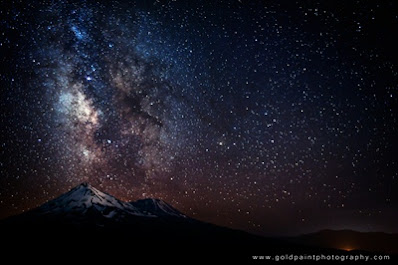The Milky Way galaxy holds a special significance to humans as it is our cosmic home. However, in the grand scheme of the universe, our galaxy is an ordinary barred spiral, one among billions of galaxies scattered across the cosmos.
When you look up at the night sky, a broad, luminous band stretches across the heavens. Ancient civilizations described this celestial feature as a "river," "milk," or "path." This striking band of light is the central plane of our galaxy as seen from one of its outer arms. The Milky Way spans approximately 100,000 light-years across, contains over 200 billion stars, and has vast reserves of gas and dust capable of forming billions more. To put it in perspective, one light-year equals 5.88 trillion miles (9.46 trillion kilometers).
Our solar system is located about 30,000 light-years from the galactic center and roughly 20 light-years above the plane of the galaxy. Interestingly, more than half of the stars in the Milky Way are older than our sun, which is approximately 4.5 billion years old.
The most common type of star in the galaxy is the red dwarf. These small, cool stars have about a tenth of the sun's mass. Initially, red dwarfs were thought to be unsuitable for hosting life-bearing planets because their habitable zones were assumed to be too close to the star. However, recent research suggests that planets in these "Goldilocks zones"—not too close and not too far from their host star—could potentially support life.
As recently as the 1920s, astronomers believed all the stars in the universe resided within the Milky Way. This perspective shifted dramatically when Edwin Hubble identified a special type of star known as a Cepheid variable. By using these stars to measure distances, Hubble discovered that many of the so-called "nebulae" were actually separate galaxies far beyond the Milky Way.
If you could take an aerial view of the Milky Way, you would see a central bulge surrounded by four prominent spiral arms. While two-thirds of all galaxies in the universe are spiral-shaped, the Milky Way is classified as a barred spiral galaxy because of the elongated bar structure running through its center. It has two major arms and two significant minor arms, along with smaller spurs. Our solar system resides in one of these spurs, the Orion Arm, situated between the larger Perseus and Sagittarius arms.
The Milky Way is not a static structure; it rotates continuously. As the galaxy spins, its arms and the solar system move through space. Our solar system travels at an astonishing speed of approximately 515,000 miles per hour (828,000 kilometers per hour). Even at this incredible velocity, it takes roughly 230 million years for the solar system to complete one orbit around the galactic center.
To grasp the vastness of the universe, consider that the Andromeda Galaxy, our closest galactic neighbor, is about 2.5 million light-years away—equivalent to 15 quintillion miles (15,000,000,000,000,000,000). This immense distance underscores the challenges of discovering intelligent life elsewhere in the cosmos, even as we continue to search for evidence of it.

